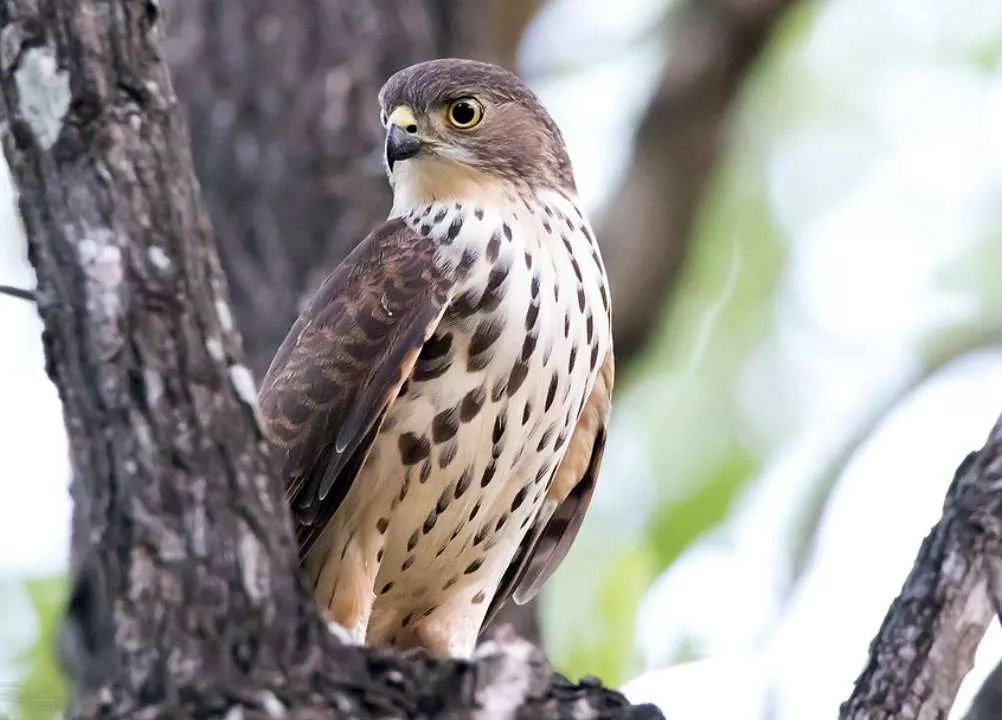Birds of prey, also known as raptors, are a diverse group of birds that are characterized by their sharp talons and hooked beaks, which they use to catch and kill their prey. While many raptors are large and impressive creatures, there are some species that are surprisingly small. In fact, the world’s smallest bird of prey is the aptly named “little sparrowhawk.”
The little sparrowhawk (Accipiter minullus) is a species of raptor that is found in parts of Southeast Asia, including Malaysia, Indonesia, and the Philippines. As its name suggests, this bird is small, with males measuring just 20-23 cm (8-9 in) in length and weighing only 60-90 g (2-3 oz). Females are slightly larger, measuring 24-26 cm (9.5-10 in) in length and weighing 100-130 g (3.5-4.5 oz).
Despite its diminutive size, the little sparrowhawk is a formidable hunter. It preys on a variety of small birds and mammals, including sparrows, doves, and even small bats. Like other accipiters, the little sparrowhawk is a “true” raptor, which means that it has short, rounded wings and a long tail that helps it maneuver quickly through dense vegetation in pursuit of its prey.
Interestingly, little is known about the breeding biology of the little sparrowhawk, as it is a relatively rare and elusive species. However, it is thought to breed in the canopy of dense forests, where it constructs a small nest out of twigs and leaves. Females typically lay 2-4 eggs, which are incubated for about a month before hatching.
Unfortunately, like many birds of prey, the little sparrowhawk is threatened by habitat loss and degradation, as well as hunting and persecution by humans. As a result, this species is considered to be “near threatened” by the International Union for Conservation of Nature (IUCN), and conservation efforts are underway to protect its remaining populations.
In conclusion, the little sparrowhawk is the world’s smallest bird of prey, but it is still a highly effective hunter that preys on a variety of small birds and mammals. While much remains to be learned about this elusive species, it is clear that it plays an important role in the ecosystems of Southeast Asia, and efforts to conserve and protect it are critical for maintaining the biodiversity of this region.


 Facebook
Facebook  Instagram
Instagram  Youtube
Youtube 